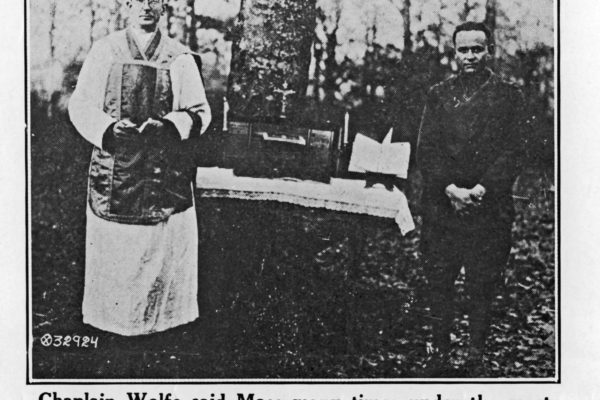41st International Eucharistic Congress
...to 1881, when a one day congress was held in Lille, France and attended by 800 people. The event in Philadelphia would last for a week and be attended by over 1,500,000 people including 44 Cardinals and 417 bishops from around the world. [1] Production of Foolsgold. Halvey A443.011 Planning
The Story of Duffy’s Cut
...l dead. Newspapers reported that cholera was to blame, though changing the number from 57 workers to about 8 or 9. Though commemorated and remembered by a few, which is indicated by a stone wall built in 1909, the story lay buried and forgotten. 1909 stone wall built by Martin
World War One Army Chaplains
...Catholic priests in the armed forces; however, by the end of the war that number grew to over 1,000.[2] Of those, 38 chaplains came from the Archdiocese of Philadelphia.[3] One chaplain’s life of remarkable note was that of Father Joseph L. N. Wolfe. Born December 26, 1881, Wolfe attended Roman
Basilica of the National Shrine of the Immaculate Conception
...merging of Byzantine and Romanesque styles.[3] The change in design had a number of reasons, which the architect, Charles Maginnis, stated arose out of a desire for a “distinctively American” church that would allow for a blending of the architecture in Washington D.C.[4] Another practical reason was the contemporary building





